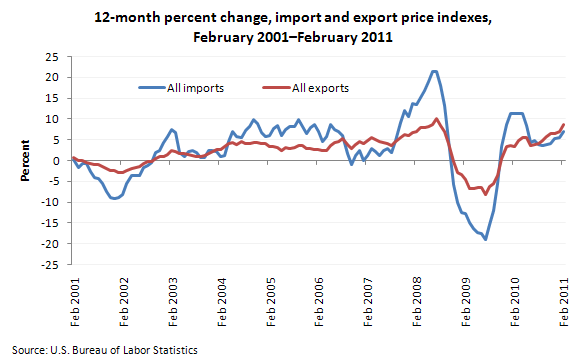Import Costs Steadily Advance
Unless you follow the prices of imported goods, it’s tricky to know if the gas station or the supermarket is just trying to make a profit, or if they are adjusting their prices due to the rising costs of imported goods. Although there does not seem to be too much surplus money in American coffers, the cost of buying foreign products has risen substantially this past year.
Are most of the companies that you represent dependent on items that must cross multiple national borders? If so, it is likely that their costs of operation may be impeding their abilities to expand their workforce.
Over the year, overall import prices advanced 6.9 percent in February 2011—the largest 12-month advance since an 8.5-percent increase between May 2009 and May 2010. Fuel import prices rose 18.6 percent, led by a 20.6-percent jump in petroleum prices. Despite rising 23.4 percent over the past 2 months, however, natural gas prices declined 10.9 percent between February 2010 and February 2011.
The price index for nonfuel imports increased 3.6 percent from February 2010 to February 2011—the largest 12-month advance since a 4.8-percent increase between October 2007 and October 2008. The current 12-month rise was mostly driven by a 12.9-percent advance in nonfuel industrial supplies and materials prices and a 15.8-percent increase in prices for foods, feeds, and beverages.
Perhaps, it is most helpful to frame this rise in imported goods in the context of the 2009- 2010 year that saw dramatic changes throughout the year. While the rising cost of exports seems promising, it is highly dependent on U.S. agriculture.


